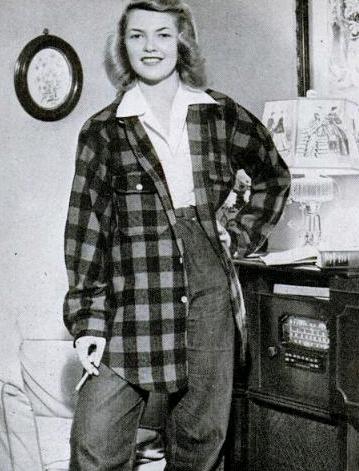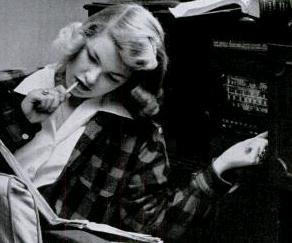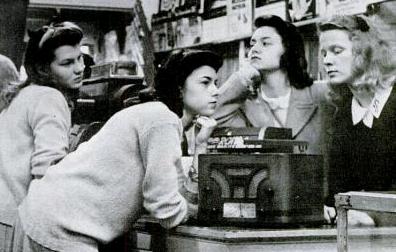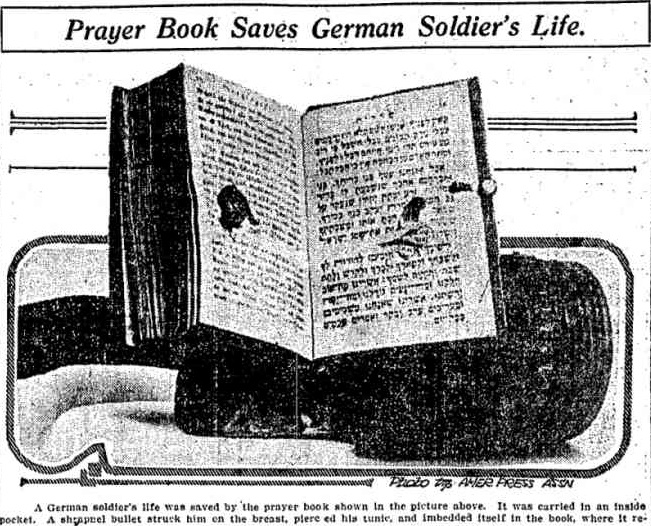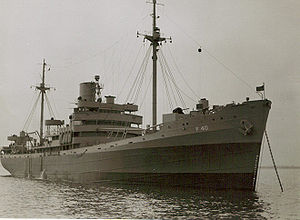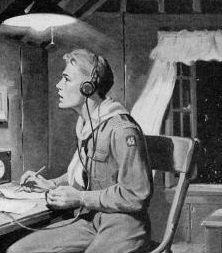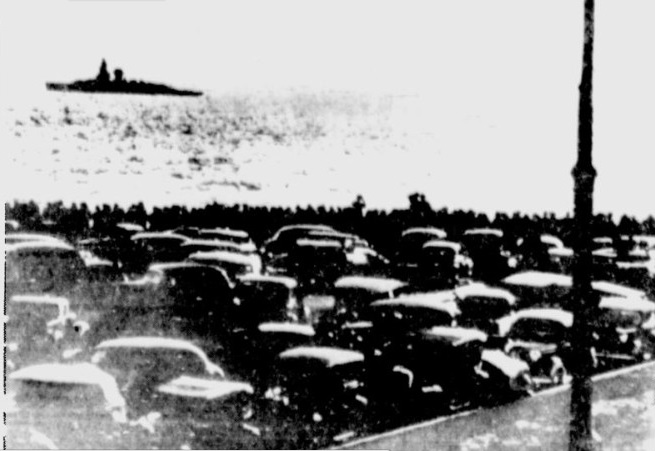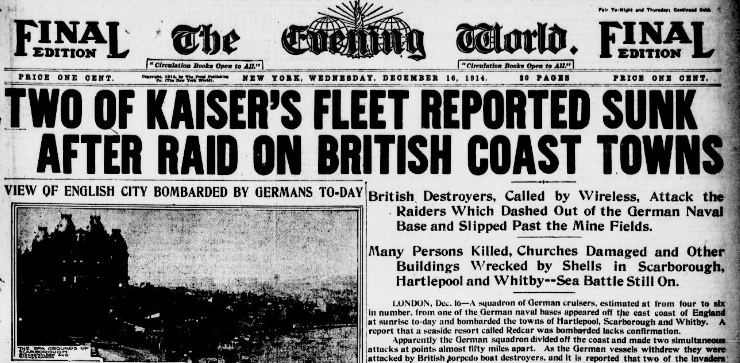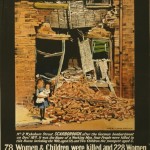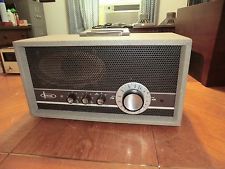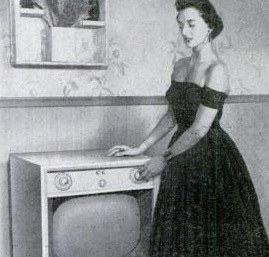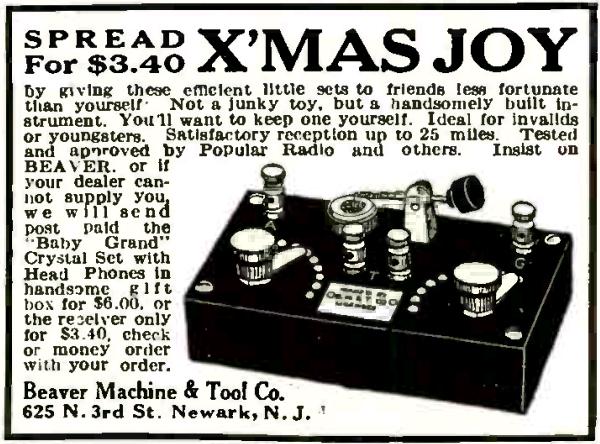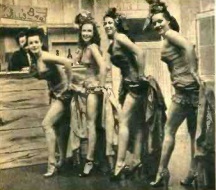 The three still photos shown here are, as far as I can tell, about the only remaining tangible evidence of a first in television history. They are from the September 28, 1944, telecast of the musical comedy The Boys From Boise, which was televisted by the New York DuMont station, WABD. The station originally came on the air as experimental station W2XWV, and in 1944 became the city’s third commercial station. As detailed in an earlier post, broadcasting as it came to be known after the war started in 1939. With the war, the other stations
The three still photos shown here are, as far as I can tell, about the only remaining tangible evidence of a first in television history. They are from the September 28, 1944, telecast of the musical comedy The Boys From Boise, which was televisted by the New York DuMont station, WABD. The station originally came on the air as experimental station W2XWV, and in 1944 became the city’s third commercial station. As detailed in an earlier post, broadcasting as it came to be known after the war started in 1939. With the war, the other stations 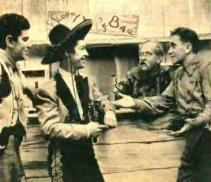 cut back on their programming, with much of it being devoted to civil defense training.
cut back on their programming, with much of it being devoted to civil defense training.
But flush with cash from helping develop radar for the army, founder Allen B. Dumont (the station bore his initials) invested $5 million in the company and expanded programming.
According to a January 1945 QST article, most of the staff of WABD was made up of hams. It was on the air three nights a week from 8:00 until 11:00. Practically the entire staff was working at the TV station on an overtime basis after working their normal day jobs at the DuMont war plant in Passaic, N.J. The station was located at 515 Madison Avenue on the 42nd floor. According to QST, the transmitter (which is described in detail) put out 6 kW. The QST article contains an additional image from the production of Boys from Boise.
According to the QST article, the station was on what was then known as channel 4, 78-84 MHz. When the channels were reallocated slightly in 1946, it moved to channel 5, which was then 76-82 MHz. The station is currently WNYW, the Fox network flagship.
One of the more ambitious projects was the production of The Boys from Boise. The program had a budget of $10,000. Given the scarcity of television sets capable of viewing the program, it’s very unlikely that 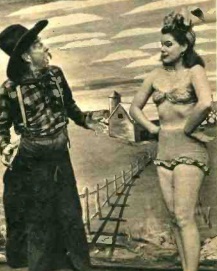 the program made any money. It was sponsored by Esquire Magazine, which included three commercials during the intermissions.
the program made any money. It was sponsored by Esquire Magazine, which included three commercials during the intermissions.
The music and lyrics were written by Sam Medoff, who conducted the orchestra, and the production was directed by Ray Nelson. The show featured the following musical numbers. I haven’t been able to find any recordings of the music, or any of the scores.
- Girls of the 8-to-the-Bar-X-Ranch
- I’ll Take the Trail to You
- Sunset Trail
- That Certain Light in your Eyes
- Chiki Chiquita
- Thousand Mile Shirt
- It’s a Mystery to Me
- Broken Hearted Blues
- Come Up and See Me Sometime
- You’ll Put Your Brand on My Heart
- Rodeo
- Western Omelet
- I’m Just a Homebody
- Star-Spangled Serenade
The production had a cast of twenty. The only recording I’ve been able to find of Medoff is his recording of the Bridegroom Special on the American Jewish Hour program on WHN radio.
According to Billboard, the evening of this program was “the night television came of age. For the first time someone had guts enough and confidence enough to dig deep into the grouchbag for a lot of lure and put on a full-fledged show for the television cameras and audience.”
The Billboard review noted that by top-notch Broadway standards, the show wasn’t too much. But it drew praise as an example of what television was capable of. The reviewer noted that two hours was too long, and that future musicals should be capped at 60 minutes. It also noted that the cast was too large, and the dance numbers too elaborate, for the TV screen.
The plot, according to Billboard, was a “complicated, albeit typical musical, setting for the boy-girl theme.” A troupe of showgirls was stranded in Boise and had to take jobs as cowgirls to earn their fare home. There are rustlers, a villanesse who wants to foreclose the mortgage, and an undercover FBI agent.
It’s unlikely that any recording was made of the program. And even if there were, the old DuMont kinescopes reportedly wound up in the East River in the 1970’s. The still pictures shown here are probably among the few reminders of this first in TV history.
Update: It’s always great to hear from relatives of people I’ve featured here. In some cases, it clears up a mystery. When I originally wrote this post, I wasn’t able to find much information about Sam Medoff, the composer of the music and lyrics for Boys from Boise. I received a nice e-mail from his son, Mitch Manning, who pointed out that Medoff changed his name to Dick Manning, who went on to pen many familiar songs such as Fascination, Papa Loves Mambo, Hot Diggity, Allegheny Moon, Takes Two to Tango, and Hawaiian Wedding Song. You can listen to an interesting 1971 interview with Manning, including a performance of Fascination, at the video below. (This is a link to someone else’s video, and I’m told that the photo is not actually Manning’s.)
References
- DuMont Television Network at Wikipedia
- Billboard, Oct. 7, 1944
- Tune In magazine, February 1945 (page 47)
- Oxford Companion to the American Musical: Theatre, Film, and Television (page 88) (See this book at Amazon
)
Click Here For Today’s Ripley’s Believe It Or Not Cartoon
![]()


